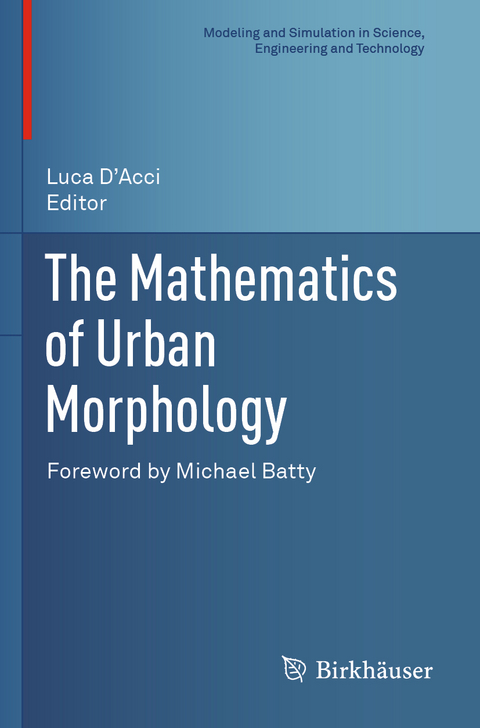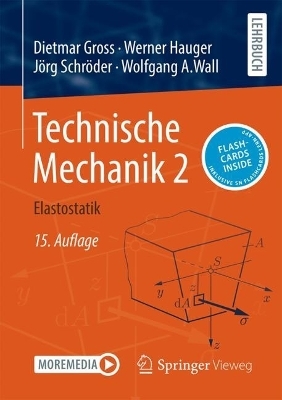
The Mathematics of Urban Morphology
Springer International Publishing (Verlag)
978-3-030-12383-3 (ISBN)
The chapters cover a wide variety of topics in urban morphology, and are conveniently organized by their mathematical principles. The first part covers fractals and focuses on how self-similar structures sort themselves out through competition. This is followed by a section on cellular automata, and includes chapters exploring how they generate fractal forms. Networks are the focus of the third part, which includes street networks and other forms as well. Chapters that examine complexity and its relation to urban structures are in part four.The fifth part introduces a variety of other quantitative models that can be used to study urban morphology. In the book's final section, a series of multidisciplinary commentaries offers readers new ways of looking at the relationship between mathematics and urban forms.
Being the first book on this topic, Mathematics of Urban Morphology will be an invaluable resource for applied mathematicians and anyone studying urban morphology. Additionally, anyone who is interested in cities from the angle of economics, sociology, architecture, or geography will also find it useful.
"This book provides a useful perspective on the state of the art with respect to urban morphology in general and mathematics as tools and frames to disentangle the ideas that pervade arguments about form and function in particular. There is much to absorb in the pages that follow and thereare many pointers to ways in which these ideas can be linked to related theories of cities, urban design and urban policy analysis as well as new movements such as the role of computation in cities and the idea of the smart city. Much food for thought. Read on, digest, enjoy." From the foreword by Michael Batty
On Urban Morphology and Mathematics.- Part I: Fractals.- Fractal Dimension Analysis of Urban Morphology Based on Spatial Correlation Functions.- Central Place Theory and Power Laws for Cities.- Distribution of Cities Size: Zipf, Gibrat, Pareto Law.- Signature of Organic Urban Growth: Degree Distribution of the City's Street Network Structure.- A Fractal Approach to Explore Australian Urban Form and Its Impacting Factors at Neighborhood Scale.- Part II: Cellular Automata.- Geographic Cellular Automata for Urban Form.- Mathematical Foundations of Cellular Automata and Complexity Theory.- Part III: Spatial Networks and Space Syntax.- Mathematics of Urban Spatial Networks.- Space Syntax: A Network Based Configurational Approach to Studying Urban Morphology.- Applied Mathematics on Urban Space.- The Morphology and Circuity of Street Networks.- Part IV: Complexity.- Emergence of Complexity in Urban Morphology.- Complexity, Darwinian Mutations, and Selection in Urban Morphology Evolution: HowMathematics Looks at Escher Metamorphosis.- A Topological Representation for Taking Cities as a Coherent Whole.- Part V: Other Forms of Quantification.- A Multiscale Classification of the Urban Morphology for Use in Quantitative Models.- An Urban Morphogenesis Model Capturing Interactions Between Networks and Territories.- Continuum Percolation and Spatial Point Pattern in Application to Urban Morphology.- Urban Compactness: New Geometric Interpretations and Indicators.- Using Google Street View for Street Level Urban Form Analysis.- Examining Spatial Structure Using Gravity Models.- Part VI: Humanistic and Multidisciplinary Commentaries.- From Morphology to Morphogenesis: Putting Mathematics in Its Place.- Not Only ... But Also: Urban Mathematical Models and Urban Social Theory.- Urban Morphology or Townscape? Wholes Made of Many Parts.- Extending Urban Morphology: Drawing Together Quantitative and Qualitative Approaches.- Mathematics and Cities: A Long-Standing Relationship Fit forthe Future.- Mathematics and/as Humanities. Linking Humanistic Historical to Quantitative Approaches.- Urban Form, Agents and Processes of Change.- The Future of Streets.- Understanding and Quantifying Urban Density Towards a More Sustainable City Form.- To Not Talk Past Each Other: An Immodest Proposal for Cross-Conceptual Research in Urban Morphology.
"D'Acci has with this book provided a useful overview of the mathematical models used in relation to urban morphology. ... the book also fills an apparent gap in the literature, coupling urban morphology and mathematics. It is to be hoped that this can be the start of a long series of books and papers where this 'new' direction in urban morphology can flourish and provide knowledge about how cities can be developed in more sustainable trajectories." (Meta Berghauser Pont, Urban Morphology, Vol. 23 (2), 2019)
"This monograph gives a comprehensive and contemporary overview of many recent advances on random walks over comb-like structures. ... This monograph is written in an explanatory and concise manner with plenty of concrete examples rather than a formal definition-theorem-proof textbook form. Nevertheless, necessary elements and preliminaries are presented to the reader and the results covered here reflect the state-of-the-art of the research on comb structures." (Yilun Shang, zbMATH 1410.91008, 2019)
| Erscheinungsdatum | 06.05.2020 |
|---|---|
| Reihe/Serie | Modeling and Simulation in Science, Engineering and Technology |
| Vorwort | Michael Batty |
| Zusatzinfo | XIII, 564 p. 156 illus., 101 illus. in color. |
| Verlagsort | Cham |
| Sprache | englisch |
| Maße | 155 x 235 mm |
| Gewicht | 878 g |
| Themenwelt | Mathematik / Informatik ► Mathematik ► Angewandte Mathematik |
| Mathematik / Informatik ► Mathematik ► Wahrscheinlichkeit / Kombinatorik | |
| Schlagworte | Cellular Automata • complex networks • Fractal Dimensional Analysis • Fractals • road networks • Spectral Analysis • Street networks • Urban forms • urban geography and urbanism • urban modeling • Urban morphology • Urban Spatial Networks |
| ISBN-10 | 3-030-12383-9 / 3030123839 |
| ISBN-13 | 978-3-030-12383-3 / 9783030123833 |
| Zustand | Neuware |
| Informationen gemäß Produktsicherheitsverordnung (GPSR) | |
| Haben Sie eine Frage zum Produkt? |
aus dem Bereich


